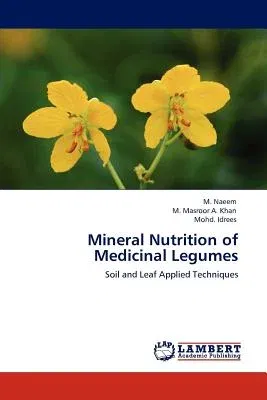M Naeem
(Author)Mineral Nutrition of Medicinal LegumesPaperback, 29 July 2011

Qty
1
Turbo
Ships in 2 - 3 days
In Stock
Free Delivery
Cash on Delivery
15 Days
Free Returns
Secure Checkout
Print Length
128 pages
Language
English
Publisher
LAP Lambert Academic Publishing
Date Published
29 Jul 2011
ISBN-10
3845423536
ISBN-13
9783845423531
Description
Product Details
Book Format:
Paperback
Country of Origin:
US
Date Published:
29 July 2011
Dimensions:
22.86 x
15.24 x
0.76 cm
ISBN-10:
3845423536
ISBN-13:
9783845423531
Language:
English
Location:
Saarbrucken
Pages:
128
Publisher:
Weight:
199.58 gm

